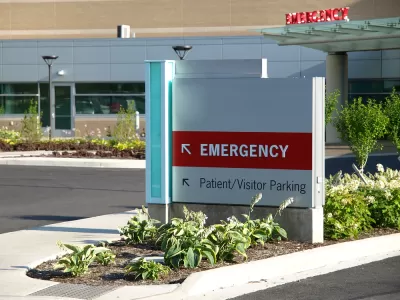If the goal of the Affordable Care Act is to reduce the percentage of Americans without health insurance, new Census data shows it's doing just that. Americans without health insurance fell by three percent last year, or 8.8 million people.

While Republican candidates for president were debating on Sept. 16 at the Reagan Library in Simi Valley, Calif., how quickly they would terminate the Affordable Care Act (aka Obamacare) if elected, the U.S. Census Bureau released new information that showed how effective the new health insurance program was in reducing the number of uninsured Americans, it's primary goal.
"The Census Bureau reports Wednesday that the percentage of Americans without health coverage fell from 13.3 percent in 2013 to 10.4 percent last year, with progress [PDF] in every single state," writes Jordan Weissmann, senior business and economics correspondent for Slate. "All told, there 8.8 million fewer people without a medical plan."
The improvement can be attributed to the "two big pillars of the health law finally moved into place."
- "First, the Medicaid expansion, which extended coverage to more working-age adults, went into effect.
- "Second, Americans were finally able to start shopping for coverage on the Affordable Care Act's exchanges with the help of subsidies."
What's clear, unfortunately, is that no changes can be attributed to an increase "in the number of people with coverage through their employers (because) the changes in job-based insurance were statistically indistinguishable from zero in 2014," writes Weissmann.
According to the Census chart [PDF] that shows the percentage changes in uninsured residents from 2013 to 2014, states with the lowest numbers were, in order:
- Massachusetts [only state with <5%]
- Vermont
- Hawaii
- District of Columbia
- Minnesota
And the states with the most number of uninsured residents, in order:
- Texas
- Alaska
- Florida
- Georgia
- Oklahoma
- Nevada
"The number of people without health insurance declined to 33.0 million from 41.8 million (from 2013 to 2014)," reads the Sept. 16 press release. Total U.S. population was 319 million in 2014, so 10.3% uninsured.
Findings "were compiled from information collected in the 2015 Current Population Survey (as opposed to American Community Survey).
The Current Population Survey, sponsored jointly by the U.S. Census Bureau and U.S. Bureau of Labor Statistics, is conducted every month and is the primary source of labor force statistics for the U.S. population; it is used to calculate the monthly unemployment rate estimates.
"Between 2008 and 2013, the national uninsured rate remained fairly stable," writes Andy Miller of the The Atlanta Journal-Constitution. "The uninsured rate was higher in states that did not expand their Medicaid programs under the ACA, the Census Bureau noted."
More than half of the states have expanded Medicaid, making more low-income adults eligible for the program. But Georgia, along with most Southern states, has declined to do so, with political leaders citing the cost of such a move.
Want more information? Click on the Census Bureau report: "Health Insurance Coverage in the United States: 2014 Current Population Reports" [PDF], issued September 2015 (40-pages).
The health insurance findings were presented by the Census Bureau with income and poverty data posted here.
FULL STORY: If You Had Any Doubts Obamacare Was Working, This New Census D

Alabama: Trump Terminates Settlements for Black Communities Harmed By Raw Sewage
Trump deemed the landmark civil rights agreement “illegal DEI and environmental justice policy.”

Study: Maui’s Plan to Convert Vacation Rentals to Long-Term Housing Could Cause Nearly $1 Billion Economic Loss
The plan would reduce visitor accommodation by 25% resulting in 1,900 jobs lost.

Planetizen Federal Action Tracker
A weekly monitor of how Trump’s orders and actions are impacting planners and planning in America.

Wind Energy on the Rise Despite Federal Policy Reversal
The Trump administration is revoking federal support for renewable energy, but demand for new projects continues unabated.

Passengers Flock to Caltrain After Electrification
The new electric trains are running faster and more reliably, leading to strong ridership growth on the Bay Area rail system.

Texas Churches Rally Behind ‘Yes in God’s Back Yard’ Legislation
Religious leaders want the state to reduce zoning regulations to streamline leasing church-owned land to housing developers.
Urban Design for Planners 1: Software Tools
This six-course series explores essential urban design concepts using open source software and equips planners with the tools they need to participate fully in the urban design process.
Planning for Universal Design
Learn the tools for implementing Universal Design in planning regulations.
Caltrans
Smith Gee Studio
Institute for Housing and Urban Development Studies (IHS)
City of Grandview
Harvard GSD Executive Education
Toledo-Lucas County Plan Commissions
Salt Lake City
NYU Wagner Graduate School of Public Service



























